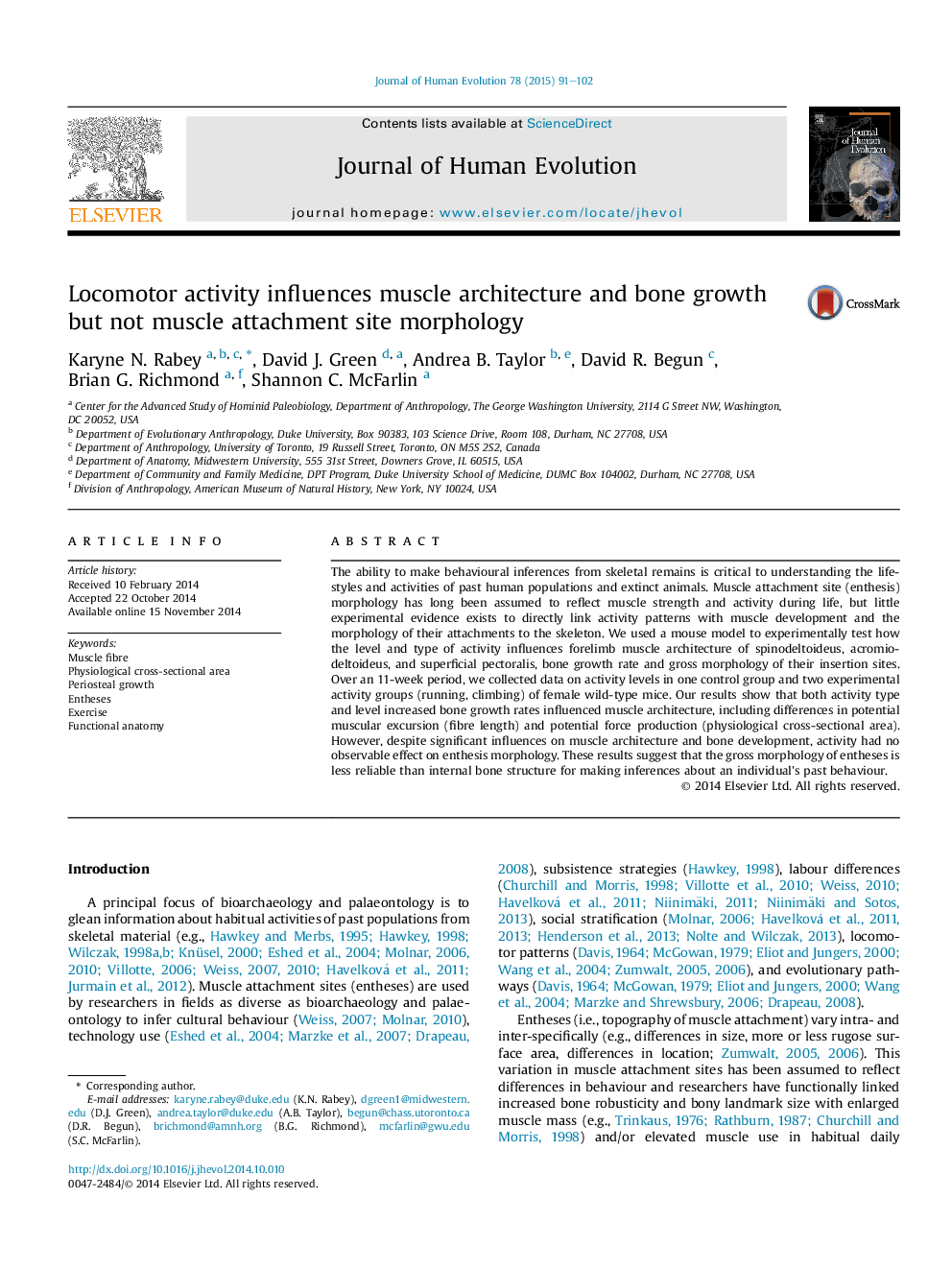| Article ID | Journal | Published Year | Pages | File Type |
|---|---|---|---|---|
| 4556008 | Journal of Human Evolution | 2015 | 12 Pages |
The ability to make behavioural inferences from skeletal remains is critical to understanding the lifestyles and activities of past human populations and extinct animals. Muscle attachment site (enthesis) morphology has long been assumed to reflect muscle strength and activity during life, but little experimental evidence exists to directly link activity patterns with muscle development and the morphology of their attachments to the skeleton. We used a mouse model to experimentally test how the level and type of activity influences forelimb muscle architecture of spinodeltoideus, acromiodeltoideus, and superficial pectoralis, bone growth rate and gross morphology of their insertion sites. Over an 11-week period, we collected data on activity levels in one control group and two experimental activity groups (running, climbing) of female wild-type mice. Our results show that both activity type and level increased bone growth rates influenced muscle architecture, including differences in potential muscular excursion (fibre length) and potential force production (physiological cross-sectional area). However, despite significant influences on muscle architecture and bone development, activity had no observable effect on enthesis morphology. These results suggest that the gross morphology of entheses is less reliable than internal bone structure for making inferences about an individual's past behaviour.
